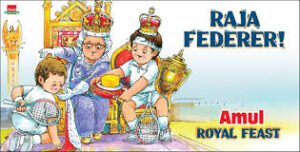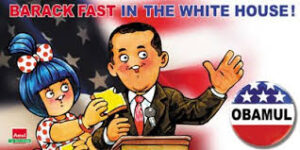Brand of Humour
There has been a lot of talk in recent times about humour and the boundaries within which it needs to operate, assuming that we accept that boundaries need to exist. Wit, mockery, satire, slapstick, light hearted, playful, banter, provocative, insulting, shocking there is a host of sub genres that can be found if you start peeling the layers.
Brands have, for as long as advertising and communication have existed, relied on humour to get their message across. Of course, with varying degree of success. We have in a previous post discussed that communication with an emotional appeal tends to fare better. Humour in that sense is a more broad based emotion than love (of any kind). Hence, has been used for a broader set of products & brands.
So is success guaranteed if the communication has humour? Does success of communication necessarily translate into sales or business success?
With all due credit to the various studies that have been carried out don’t seem to provide any conclusive evidence. Therefore, No and Can’t Say, would be the most honest responses to the questions above. How then do we assess or plan for it? In some form or the other the answer would lie on a graph with relevance and recall as the axes.
While the above would give an indication of the effectiveness the aspect that relative control may be exercised is relevance. The down side. It is subjective. The extent of humour, the subject, the delivery all are but a judgement call made by a select few that run the brand. There are several different ways in which humour can be used:• Positioning the brand as one with a light hearted view of the world. Humour and playfulness therefore becomes a key element of the brand’s personality.
• Presentation: This may be a campaign specific choice where in a brand opts for humour as a means of delivering a message. Relevance would again be something to watch out for. Some brands are able to hit the nail on the consistently, some struggle, whilst others just do not get it!
• Association: Depending upon who the brand’s audience is, a brand may choose to associate with properties that are humour based. Again, as with any other association relevance and fit with the overall brand is important.
http://www.youtube.com/watch?v=A9nCPQ2_FlQ
Given the myriad media choices available and the fact that in this day and age consumers are a part of the brand definition humour is a tight rope to walk too. Brands that choose this path have to walk to a consistent rhythm and in a social 24×7 context live upto the personality especially brands interacting on a constant basis in the sociosphere.
The good part is the sociosphere offers feedback as a brand you can gauge whether you are flat or tickling rib or stirring intellect.
While new highs are being achieved with regard to what can be said or done in the name of humour there are new lows that are being set too, Charlie Hebdo and the AIB Knockout closer home are cases in point where humour did not go down well with some. It doesn’t need to either. Needless to say any freedom needs to be exercised responsibly.The WIN-SEE Code: Cracking Audiences with Laughter
Laughter they say is the best medicine. Certainly so, as far as the GEC space is concerned. Indian television over the years has invariably found success in its flirtations with comedy as a genre. Again with no specific research to back my claim would like to move forward on the basic premise that light-hearted (at times meaningless as well) comedy has a cut through across age and demographics.
From the Doordarshan days of Yeh Jo Hai Zindagi and Ulta Pulta or the Sajid Khans and Shekhar Sumans of the world as cable television started out or more recently, the stand-up comedy phenomenon. Comedy has delivered well in the fiction and non-fiction/reality formats.
The inaugural season of Comedy Nights with Kapil a weekend show launched mid-2013 on Colors (An Indian GEC part of Viacom) has been seeing phenomenal success.
[youtube=http://www.youtube.com/watch?v=OuDOpQC3N2U&feature=c4-overview&list=UUyfkoMQeJOoEt3ZhY3PI6Uw]
Recently released numbers for Wk3 2014 indicate that the show rated at 11 TVM in terms of viewership. By all means a staggering achievement given the fact that India has approximately 145Mn households that have Cable & Satellite out of which this programming would appeal to households that speak and understand Hindi. Couple that with a following of just under 6Mn on Facebook and 14Mn page-views on YouTube and we are talking of a brand that would stand tall amongst the best!
So here’s my theory of what the underlying factors of this success are, the WIN-SEE code (if you indulge me)
· Witty: One of the key traits of the shows anchor is his earthy wit. Repartee is perhaps the best representation of the kind of humor that works in a family or a friend’s kind of an environment. The show is purported to have brought back television viewing as a family activity. The show is conversation currency.
· Irreverent: The content of the show is constantly pushing further the envelope with regard to its treatment of established institutions and norms. Even the audiences are not spared when it comes to comments on their profession, physical appearance etc.
· Naughty: Humour across the world has always been ridden with innuendos. The characters of the show are overtly flirtatious and suggestive. Strangely enough they have been able to get away and redefine what acceptable conversation in Indian households is. Perhaps, the over the top approach softens the crude content. Albeit the writers of the show thus far have been able to walk that fine line.
 Star Quotient: Celebrities have invariably formed a part of successful shows. The difference in approach of this show has been that the host does not spare the guests. The show has given access to the witty, irreverent and naughty side of its guests, a clear differentiator. Celebs and ratings of course form a self-propagating virtuous cycle and the show’s success has made it the choice destination for PR.
Star Quotient: Celebrities have invariably formed a part of successful shows. The difference in approach of this show has been that the host does not spare the guests. The show has given access to the witty, irreverent and naughty side of its guests, a clear differentiator. Celebs and ratings of course form a self-propagating virtuous cycle and the show’s success has made it the choice destination for PR.· Egalitarian: The show has no pretensions. The humor is basic bordering slap-stick. While the intellectuals get their high with the quick repartee and satire the masses are served a dollop of “nautanki” with men dressed as women, buffoonery etc. Every gets a fair dose of what they need and everyone is happy. The show cuts across ages as well. My yet to turn 2 year old who has just about started speaking knows the show and even its characters by name!
· Empathetically engaging: The basic construct of the show is the clichéd North Indian household. The lazy flirtatious male and his aspirations monetary and romantic. The oppressed wife, the bossy granny and the interfering aunt and irritating neighbours. There are constant references to the challenges of running a household such as inflation, corruption etc.
 All of the above make it one neat entertainment package that has hit a home-run as far as the 4 R’s of media are concerned Relevance, Reach, Ratings and Revenues.
All of the above make it one neat entertainment package that has hit a home-run as far as the 4 R’s of media are concerned Relevance, Reach, Ratings and Revenues.Success they say is its own enemy and has begun to take its toll on the show with key characters deciding to chart their own course.
What remains to be seen is how effectively they crack the WIN-SEE code!



